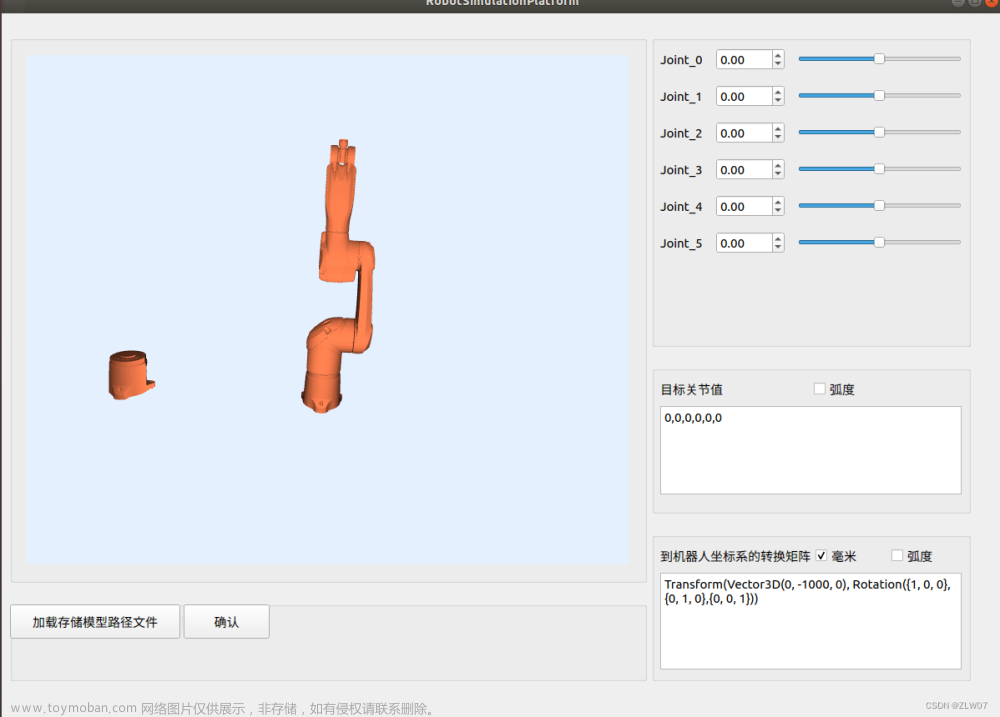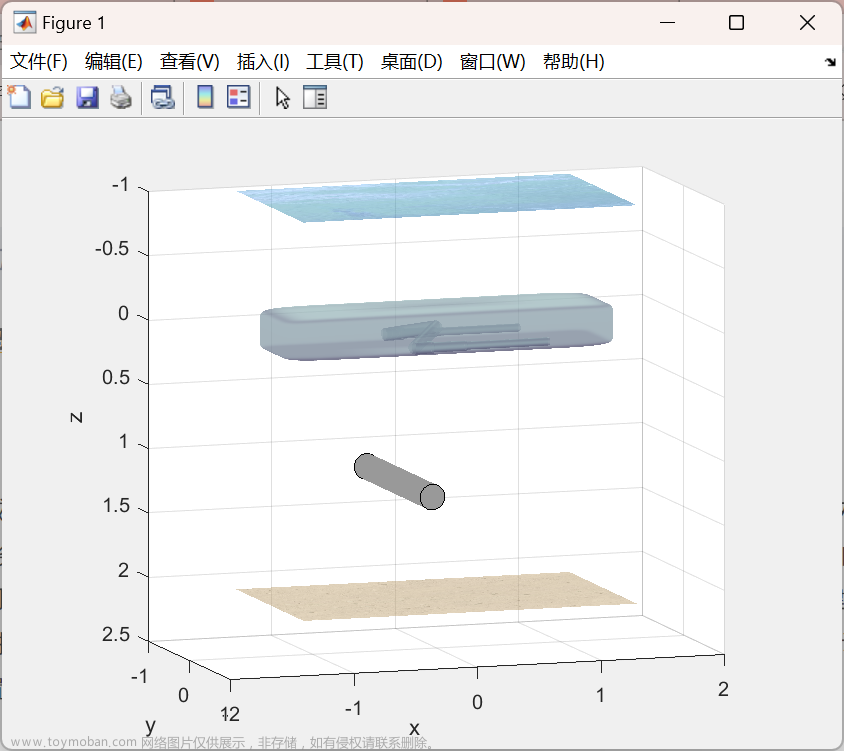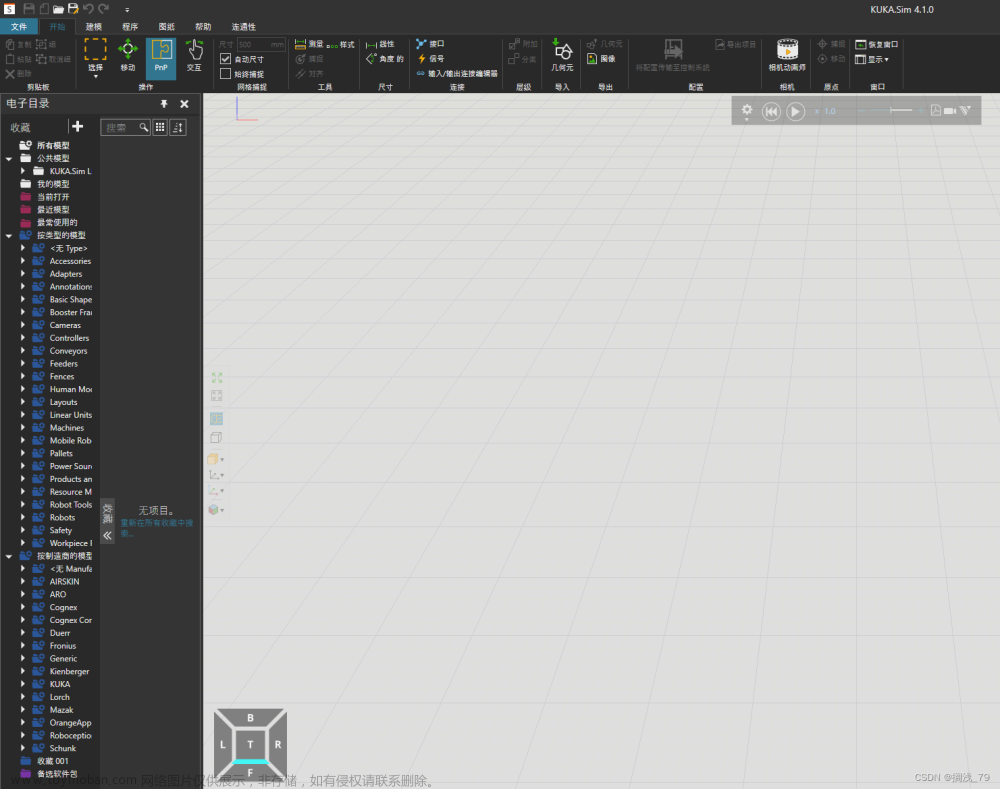利用Apple最新的Realitykit搭配ARkit实现虚拟物体的放置,结合内置的Speech库实现语音的识别功能,将语音内容转为文本内容,从而让机器进行运动。
大体思路:
1、配置并启动ARkit环境。
2、构建Entity实体。可以用Apple官方的CreatingAPhotogrammetryCommandLineApp的代码文档来生成.usdz文件,从而建造自己想要的实体。
3、放置实体到现实环境中。通过raycast发射射线,通过转化获得现实世界中的x,y,z的坐标,从而把实体放在现实世界中。
4、实现机器人的运动。通过传入文本信息,利用实体的transition属性来进行移动。
5、通过SFSpeechRecognizer获得语音识别允许。
6、创造音频节点,将输入语音的设备设置为麦克风,将音频结果初始化,放到SFSpeechAudioBufferRecognitionRequest里面。
7、进行音频结果的处理,转化为文本,放到机器人运动中。
8、机器人完成运动
没介绍的其他代码就是为实体添加属性,让机器人能够移动,放缩,旋转。
还有一些手势的识别:长按添加新的实体,滑动让实体消失。文章来源:https://www.toymoban.com/news/detail-421137.html
import UIKit
import RealityKit
import ARKit
import Speech
class ViewController: UIViewController {
@IBOutlet var arView: ARView!
var entity: Entity?
var moveToLocation: Transform = Transform()
let moveTime: Double = 5
//语音识别
let speechRecognizer: SFSpeechRecognizer? = SFSpeechRecognizer()
let speechRequest = SFSpeechAudioBufferRecognitionRequest()
var speechTask = SFSpeechRecognitionTask()
// 音频实例化
let audioEngine = AVAudioEngine() //设立音频节点,处理音频输入和输出
let audioSession = AVAudioSession() //音频记录初始化
override func viewDidLoad() {
super.viewDidLoad()
entity = try! Entity.loadModel(named: "toy_robot_vintage.usdz")
entity?.generateCollisionShapes(recursive: true)
//包裹起来 增加碰撞属性
arView.installGestures([.rotation,.scale,.translation], for: entity! as! HasCollision)
//创建session
startARSession()
//创建手势 将2d位置转换为3d位置 获取位置传递到下面的函数中
arView.addGestureRecognizer(UITapGestureRecognizer(target: self, action: #selector(handleTapLocation)))
arView.addGestureRecognizer(UISwipeGestureRecognizer(target: self, action: #selector(handleSwipeLocation)))
arView.addGestureRecognizer(UILongPressGestureRecognizer(target: self, action: #selector(handleLongPressLocation)))
startSpeechRecognition()
}
@objc func handleTapLocation(_ recognizer:UITapGestureRecognizer){
let tapLocation = recognizer.location(in: arView)
//发射粒子 转化为3d坐标
let result = arView.raycast(from: tapLocation, allowing: .estimatedPlane, alignment: .horizontal)
//得到x,y,z坐标
if let firstResult = result.first{
let worldPosition = simd_make_float3(firstResult.worldTransform.columns.3)
placeModelInWorld(object: entity!, position: worldPosition)
}
}
@objc func handleSwipeLocation(_ recognizer: UISwipeGestureRecognizer){
let longPressLocation = recognizer.location(in: arView)
if let entity = arView.entity(at: longPressLocation){
entity.anchor?.removeFromParent()
}
}
@objc func handleLongPressLocation(_ recognizer: UILongPressGestureRecognizer){
let doubleTapLocation = recognizer.location(in: arView)
let result = arView.raycast(from: doubleTapLocation, allowing: .estimatedPlane, alignment: .horizontal)
//得到x,y,z坐标
if let firstResult = result.first{
let worldPosition = simd_make_float3(firstResult.worldTransform.columns.3)
if (arView.entity(at: doubleTapLocation) == nil){
let objectAnchor = AnchorEntity(world: worldPosition)
let entity1 = try! Entity.loadModel(named: "toy_robot_vintageOne.usdz")
entity1.generateCollisionShapes(recursive: true)
arView.installGestures([.translation,.rotation,.scale], for: entity1)
objectAnchor.addChild(entity1)
arView.scene.addAnchor(objectAnchor)
}
}
}
func startARSession(){
arView.automaticallyConfigureSession = true
let configuration = ARWorldTrackingConfiguration()
configuration.planeDetection = [.horizontal]
configuration.environmentTexturing = .automatic
// arView.debugOptions = .showAnchorGeometry
arView.session.run(configuration)
}
func placeModelInWorld(object:Entity,position:SIMD3<Float>){
let objectAnchor = AnchorEntity(world: position)
objectAnchor.addChild(object)
arView.scene.addAnchor(objectAnchor)
}
func rebotMove(direction: String){
switch direction{
case "forward":
moveToLocation.translation = (entity!.transform.translation)+simd_float3(x:0,y:0,z:20)
entity!.move(to: moveToLocation, relativeTo: entity!, duration: moveTime)
walkAnimation(movementDuration: moveTime)
print("moveForward")
case "back":
moveToLocation.translation = (entity!.transform.translation)+simd_float3(x:0,y:0,z:-20)
entity!.move(to: moveToLocation, relativeTo: entity!, duration: moveTime)
walkAnimation(movementDuration: moveTime)
case "left":
let rotateToAngle = simd_quatf(angle: GLKMathDegreesToRadians(90), axis: SIMD3(x:0,y:1,z:0))
entity!.setOrientation(rotateToAngle, relativeTo: entity!)
case "right":
let rotateToAngle = simd_quatf(angle: GLKMathDegreesToRadians(-90), axis: SIMD3(x:0,y:1,z:0))
entity!.setOrientation(rotateToAngle, relativeTo: entity!)
default:
print("没有移动指令")
}
}
func walkAnimation(movementDuration: Double){
if let rebotAnimation = entity!.availableAnimations.first{
entity!.playAnimation(rebotAnimation.repeat(duration: movementDuration),transitionDuration: 0.5,startsPaused: false)
print("Yes")
}else{
print("没有相关动画")
}
}
func startSpeechRecognition(){
//获得允许
requestPermission()
//记录
startAudioRecoding()
//识别
speechRecognize()
}
func requestPermission(){
SFSpeechRecognizer.requestAuthorization { (authorizationStatus) in
if(authorizationStatus == .authorized){
print("允许")
}else if(authorizationStatus == .denied){
print("拒绝")
}else if(authorizationStatus == .notDetermined){
print("等待您的决定")
}else if(authorizationStatus == .restricted){
print("无法启用")
}
}
}
func startAudioRecoding(){
//创造输入节点
let node = audioEngine.inputNode
let recordingFormate = node.outputFormat(forBus: 0)
node.installTap(onBus: 0, bufferSize: 1024, format: recordingFormate) { (buffer, _) in
self.speechRequest.append(buffer)
}
//启动引擎
do{
//配置音频会话为从麦克风录制
try audioSession.setCategory(.record,mode: .measurement,options: .duckOthers)
try audioSession.setActive(true,options: .notifyOthersOnDeactivation)
audioEngine.prepare()
try audioEngine.start()
}
catch{
}
}
func speechRecognize(){
guard let speechRecognizer = SFSpeechRecognizer()else{
print("语音识别不可用")
return
}
if (speechRecognizer.isAvailable == false){
print("无法正常工作")
}
var count = 0
speechTask = speechRecognizer.recognitionTask(with: speechRequest, resultHandler: { (result, error) in
count += 1
if(count == 1){
guard let result = result else {
return
}
let recognizedText = result.bestTranscription.segments.last
self.rebotMove(direction: recognizedText!.substring)
print(recognizedText!.substring)
}else if(count>=3){
count = 0
}
})
}
}
注释已经放在代码中了,只需要导入自己的.usdz文件就可以运行成功了。文章来源地址https://www.toymoban.com/news/detail-421137.html
到了这里,关于Realitykit结合Speech实现语音控制AR机器人移动(完整代码)的文章就介绍完了。如果您还想了解更多内容,请在右上角搜索TOY模板网以前的文章或继续浏览下面的相关文章,希望大家以后多多支持TOY模板网!










